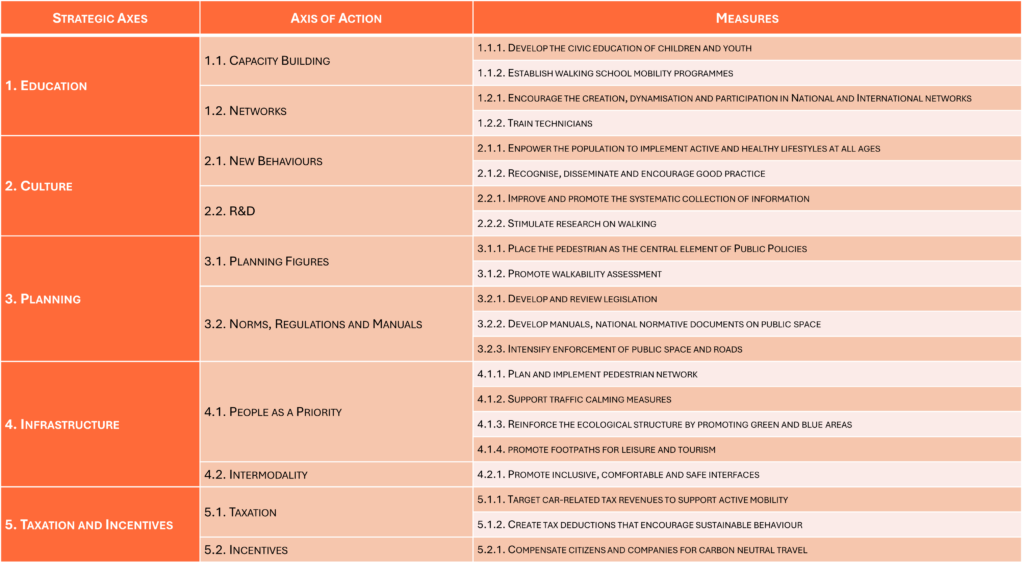Action plan for pedestrian mobility
Education, Culture, Planning, Infrastructure and Taxation and Incentives. These are the five strategic vectors to implementing the National Walking Strategy.
The Action Plan translates the Nacional Walking Strategy into practical steps, developing axes and measures to achieve its goals. There are five strategic vectors, each with two strategic axes and 21 measures that operationalize them (table below).

1. Education
Children and youth education should consider their abilities to navigate the territory and perceive the built environment. Actions should empower them to move confidently in different street types and modes of transportation. Curricular and extracurricular activities should promote active modes such as walking or cycling, involving the school community based on best practices.
Professional networks related to active mobility, particularly walking, facilitate knowledge sharing, error prevention, and training across diverse fields such as planning, urbanism, engineering, architecture, landscaping, geography, health, sports, and gerontology.
2. Culture
Behavioral change is the first of the two strategic axes in this domain. The priority is to empower the population through awareness campaigns, encouraging the adoption of active and healthy lifestyles at all ages. By communicating the benefits of walking, we impact public health, the environment, sociability, the economy, local commerce and employment opportunities. Recognizing and rewarding best practices is essential.
Research and Development is another dynamic axis. Gathering information across areas with an impact on pedestrian mobility is crucial. This data equips decision-makers with agile and appropriate responses to the changing mobility patterns.
3. Planning
Placing pedestrians at the heart of public policies is essential. Pedestrians should be central to policy definition, contributing to the inversion of the mobility pyramid. Prioritizing walking and mobility (especially for citizens with motor disabilities) as a universal access condition is crucial.
Structuring urbanization around public transport, as in the concept of transit–oriented development, improving accessibility in urban and residential areas, and studying pedestrian circulation are practices that can sustain this vision at the planning level.
Norms, regulations and manuals play another critical role in planning. Having manuals or normative guidelines for public spaces is essential. Additionally, increased oversight of public space and road use is necessary.
4. Infrastructure
People must be the priority. It is essential to implement a coherent pedestrian network, incorporating sidewalks, squares, and pedestrian or shared streets. This network should be continuous, safe, comfortable, barrier-free and accompanied by measures to mitigate temperatures and enhance urban spaces. Furniture that promotes rest and comfort, especially for children and the elderly, is essential.
Direct, continuous, and obstacle-free connections between major attraction points and transportation networks are crucial. Measures such as traffic calming, ecological urban structure reinforcement, and promoting pedestrian paths and leisure trails (both urban and natural) are essential. Health entities should encourage physical activity, including walking.
Properly integrating active modes with public transportation is essential. Universal accessibility at boarding areas, stops and stations, including rolling stock, ensures safe, comfortable and autonomous transitions for people with disabilities and older adults.
5. Taxation and Incentives
Taxation can effectively promote pedestrian mobility. Redirecting automobile-related tax revenues toward active mobility is beneficial.
Incentives facilitated by blockchain-based mobility credits, can reward sustainable mobility behavior and reduce Greenhouse Gas emissions while promoting physical activity and preventing sedentary lifestyles.



